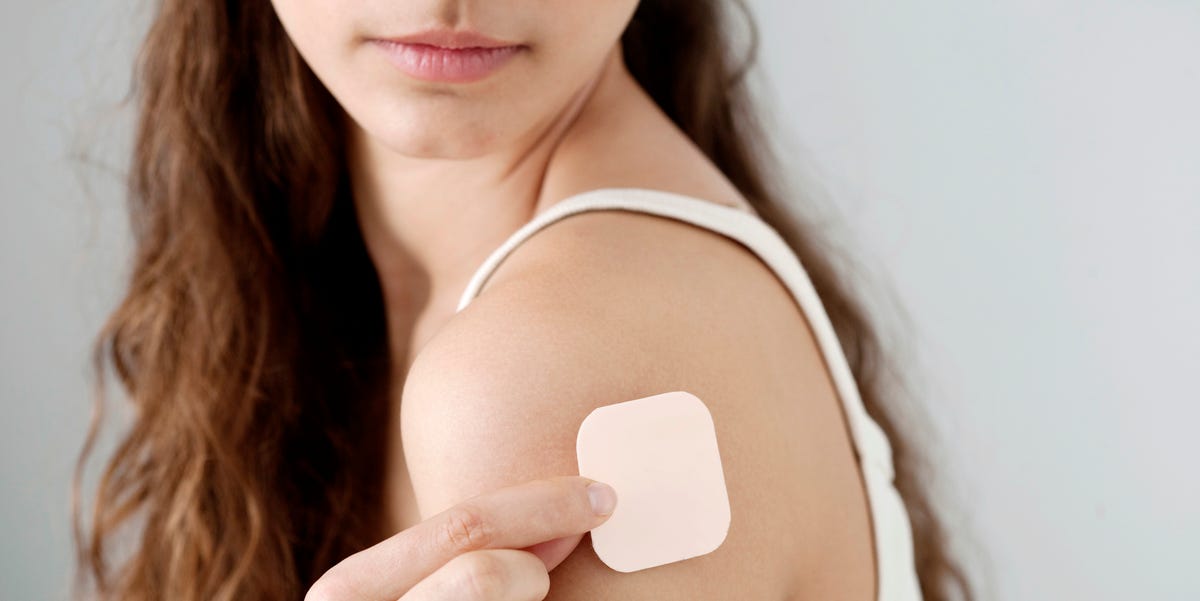
Are Vitamin Patches Effective? Doctors Weigh In
Having to swallow a huge pill every day is the worst part of taking your daily vitamins. Not only can it make taking supplements unappealing, but also just plain tiring.
Enter: vitamin patches. Companies like Barriere, The Good Patch, and Alan have introduced chic “sticker vitamins” that you can wear on your skin. The idea is that they can be absorbed into your bloodstream through your skin, but experts aren’t sure they’re effective.
Meet the experts: Austin Shuxiao, MD, is an internal medicine physician and the founder and medical director of PeachIV, a New York City-based company for home IV treatments. Paul Daidone, MD, is an internal medicine physician and the medical director at True Self Recovery, an Arkansas-based substance abuse rehabilitation center.
“For the most part, our skin acts as a barrier to keep most substances out,” like vitamins, says internal medicine physician Austin Shuxiao, MD, founder and medical director of home IV treatment brand PeachIV. Those substances include vitamins. But vitamin patches also contain enhancing substances, like ethanol, which temporarily increase skin permeability so the vitamins can be absorbed, he adds.
Below, doctors explain how vitamin patches compare to oral supplements, and whether they make sense to use.
Are vitamin patches as effective as oral supplements?
The jury is still out, experts say. While our skin is a protective barrier, “the gut was designed to absorb as many nutrients as possible,” like water- and fat-soluble vitamins, says Dr. Shuxiao. Plus, there is plenty of research showing how effectively vitamins are absorbed in the gut, while the research around transdermal, or skin-absorbed, patches is limited and inconclusive, stresses internal medicine physician Paul Daidone, MD, the medical director at True Self Recovery.
For instance, a 2019 study in Obesity Surgery compared the use of vitamin patches versus oral vitamins in patients who had undergone gastric bypass surgery over 12 months. Fourteen out of the 17 patients in the patch group had at least one vitamin deficiency, compared to 11 out of 27 patients in the pill group. About 81 percent of the patch group had a vitamin D deficiency, while the pill group had 36 percent. Plus, the patch group had statistically significant lower concentrations of vitamin B1 and B12 than the pill group.
Related Stories
How much your body absorbs from these vitamin patches is highly dependent on how the patch is made (including the material of the patch and the dose of vitamin), an individual’s skin, and where on the body you place the patch, Dr. Daidone adds. “Patches stick more successfully to thin-skinned spots with an abundance of blood supply, like the inner wrist, upper arm, lower back, or behind the ear,” he says, while ineffective spots include the soles of your feet or areas where hair would prevent the patch from sticking properly.
Additionally, some types of vitamins absorb better into the skin than others. Patches with fat-soluble vitamins, such as vitamins A, D, E, and K, are more likely to be absorbed in the skin, compared to water-soluble vitamins, which need certain proteins to aid absorption that are not found in the skin, Dr. Daidone says. The gut, on the other hand, contains these proteins and is capable of absorbing both fat- and water-soluble vitamins, making oral supplements more effective, says Dr. Shuxiao.
Who should use vitamin patches?
First, chat with your doctor to determine whether you have any vitamin deficiencies, Dr. Daidone says. If you do, then you can discuss whether vitamin patches are the best option.
Related Story
“For most people, a vitamin patch is unnecessary, and they are better off getting their nutrients through food or an oral supplement,” adds Dr. Shuxiao. He only recommends vitamin patches for those who are unable to swallow pills or people with gut issues that prevent absorption. Even then, IV or injection treatments are still better options because these methods guarantee absorption into the bloodstream, he says. But if those options aren’t available or are too costly, vitamin patches might be suitable.
How should I use vitamin patches?
If you opt to try vitamin patches, follow the instructions on the packaging. You’ll typically place a patch on clean, dry, and hairless skin, such as the inside of the wrist, and leave it on for the indicated time, which is usually eight to 12 hours, says Dr. Daidone. Many patches may be worn every day, while others are meant to be worn every other day, depending on the brand. Dr. Shuxiao recommends switching up where you place patches to avoid skin irritation.
And don’t worry about using your vitamin patches in conjunction with food—unlike with many oral supplements, vitamin patches don’t need to be taken with food since they are not tied to gut absorption, Dr. Shuxiao says.
Related Stories
So while vitamin patches can be a useful and trendy alternative to oral supplements, it’s unclear how effective they are, and shouldn’t be your first line of defense if you have a vitamin deficiency. If you’re unsure, ask a doctor whether vitamin patches are safe for you to use.
Lauren Perez Silva is a Brooklyn-based freelance health writer specializing in supplements, nutrition, mental health, and holistic medicine. She also covers mental health in her personal essays, as well as bi-ethnic and millennial girlhood and culture. You can find her work in Forbes Health, Oh Reader magazine, and her Substack, Just a Mix of Things. When she’s not working, she’s probably reading, embroidering, or hanging out with her tortie cat.
No Byline Policy
Editorial Guidelines
Corrections Policy
Source